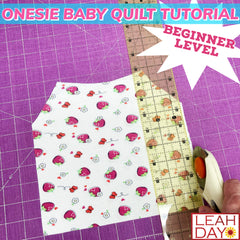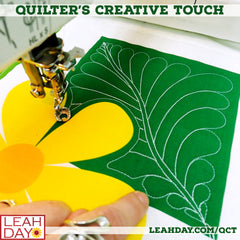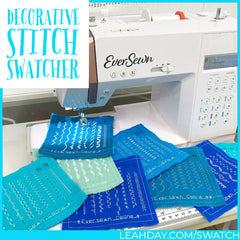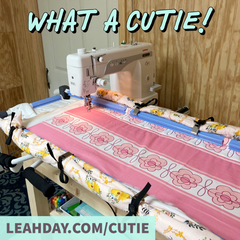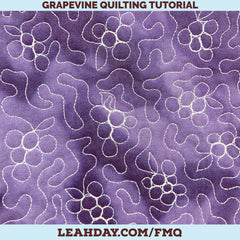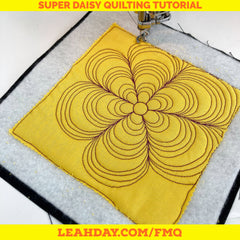Free motion quilting can be a challenging technique to master on your home sewing machine. If you're used to quilt piecing or garment sewing, you're used to the machine feeding the fabric forward and producing beautiful, evenly spaced stitches.
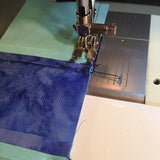
And this is precisely what doesn't happen in free motion quilting! Suddenly you're in control of the stitch length and consistency as you produce every stitch by moving your hands in time with the speed of your machine.
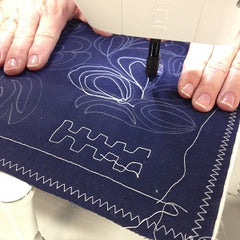
It's good to understand that ugly stitches are perfectly normal when you first start free motion quilting. As you build skills for moving the quilt smoothly and maintaining a steady speed, your stitches will get prettier and your confidence will grow.
Let's learn some tips that will help you get through the common beginner hurdles of free motion quilting!
Five Helpful Tips for Free Motion Quilting
1. Practice is Key - Free motion quilting requires a combination of timing and spacial orientation skills, so it may feel more like learning how to play a musical instrument than learning how to sew.
For that reason, it's a good idea to practice 10 minutes a day. This is more than enough time to quilt one small square with a different free motion filler design. Click Here to find a fun workshop to learn 30 beginner level designs!
 2. Invest in Your Space - How you sewing machine is positioned makes a HUGE difference in how your quilting will look. Having your sewing machine on a flush surface is essential to reducing the drag on your quilt.
2. Invest in Your Space - How you sewing machine is positioned makes a HUGE difference in how your quilting will look. Having your sewing machine on a flush surface is essential to reducing the drag on your quilt.
It's also impossible to practice quilting daily if your machine is stuck in the back of the closet. Set up your machine in a flatbed sewing table so you can quickly hop onto the machine and practice anytime.
3. Spend Your Stash - Many quilters love the idea of slicing into fabric to make a beautiful quilt, but balk at the idea of slicing up the same fabric to practice free motion quilting. How are you ever going to become a confident quilter if you're not willing to use real fabric in the effort?
Get over the idea that practicing is a waste! The best fabric to practice on is 100% cotton in solid colors so you won't be distracted by a busy print. Contrast your thread color with the fabric color so you can see what you're doing and greatly improve with every square you quilt.
4. Thread Tails Up - When you're starting, pull up your bobbin thread rather than let it get tangled on the bottom of the quilt. This reduces thread breakage and messy appearance on the back of your quilt.
To bring your bobbin thread to the quilt surface, lower your needle into the quilt using your hand wheel. Keep turning the hand wheel until the needle drops down, then comes ALL the way back up and begins to drop down again. This means the top thread has made a full rotation through the bobbin area. Tug on the top thread and the bobbin thread will pull up to the quilt surface.
 5. Increase Your Grip - Most quilts are made from cotton fabric which is quite soft and slippery under your fingers. When you free motion quilt, you're needing to move the quilt smoothly over the machine, but this can be very challenging if your hands are slipping over the surface.
5. Increase Your Grip - Most quilts are made from cotton fabric which is quite soft and slippery under your fingers. When you free motion quilt, you're needing to move the quilt smoothly over the machine, but this can be very challenging if your hands are slipping over the surface.
This is why quilting gloves are so essential to free motion quilting with control and precision. The grippy tips will allow you to grip the quilt surface with your fingertips and move even heavy, bulky quilts smoothly over the machine.
Enjoy the Journey of Free Motion Quilting
The most important tip for learning free motion quilting is this: enjoy the journey. Appreciate the process of learning this machine quilting style and accept yourself and your skills as they are.
With time, practice, and patience, you will improve. The hardest part of free motion quilting is surrendering to the ugly stitches and imperfection. Many quilters feel extremely fearful about showing anything less than absolute perfection in their quilts.
But do remember that you are a human, not a machine. No matter how skilled you become with free motion quilting, there will always be subtle imperfections. The point is not to be perfect, but to have fun making beautiful quilts!


